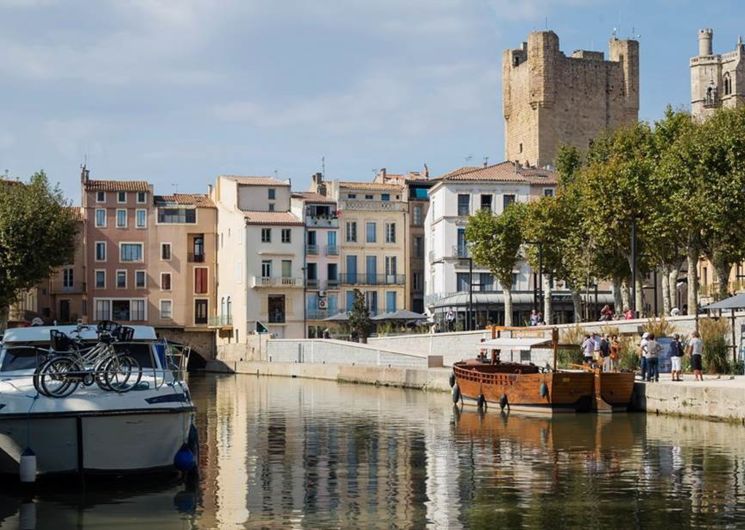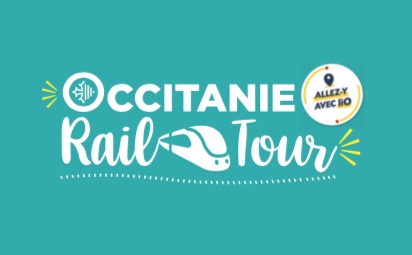Narbonne
NARBONNE , Aude – Point of interest
About
The reputation of Narbonne as a “City of Art and History” is due in no small measure to its strong Roman identity.
It was in fact the first Roman city in Gaul, prior even to the conquest of Julius Caesar. Founded in 118 BCE, Narbonne’s geographical location made it a veritable crossroads on the Mediterranean coast. Narbo Martius made extensive use of the Roman-built port, as well as the Via Domiziana, created at the city’s foundation, to link Italy with Spain. This road was originally planned to facilitate traffic between Roman garrisons, but traders soon made it their own and Narbonne became an obligatory stoppingoff point. Following the conquest of the Gauls, the town experienced a considerable economic boom, with a flourishing wine, wheat and ceramic industry. In front of the town hall, admire the paved stretch of the Via Domiziana as it looked in 100 BCE. The route led into the heart of the city via today’s rue de Lattre, crossing place Bistan, the former Roman Forum, before joining the Pont des Marchands above the Robine canal.
In Narbonne, it is said that the soil still hides many ancient treasures. Even if most of the Roman monuments have been destroyed, some museums and excavation sites preserve the memory of Narbo Martius. To better showcase this rich heritéage, a project has just been launched for Narbo Via, a Regional Museum of Ancient Narbonne, which will be home to over 15,000 pieces including sculptures, mosaics, murals, and stonework. The design of the museum, which will open in 2020, has been entrusted to the celebrated English architect Norman Foster. But the history of Narbonne, which was an Arab province for a few decades in the 8th century, is rich also with its mediaeval past as a centre both spiritual – as symbolised by the imposing Cathédrale Saint-Just et Saint-Pasteur – and commercial, as well as its Occitan strain.
Narbonne, however, does not rest on its historic laurels. Its art of living invites you to enjoy today. The Baltard-style glass and cast iron market halls are the heart of the old city, and bustle with life against the background of the rich mediaeval past. With its varied natural attractions (Massif de la Clape, Massif de Fontfroide), its location amongst celebrated vineyards where wine tourism is booming, particularly with the Tourist Office’s ‘wine safaris’, Narbonne in summer leads a double life, adding to the attractions of the city Narbonne-Plage’s five kilometres of fine sand, a holidaymaker’s dream.
France’s only residential bridge!
Built in the Roman era as part of the Via Domitia, seven arches long, the Vetus bridge, as it was then known, has always been central to Narbonne’s development. Reinforced in the Middle Ages, it was gradually colonized by peddlars and their stalls, as was the custom then in Paris and Italy. Today it is the only residential bridge remaining in France.
Spoken languages : French
Go there by liO Train (regional trains)
A moins de 10 mn à pied de la gare de Narbonne !
Environ 10 min (907 m).
La meilleure desserte pour la gare NARBONNE propose jusqu’à 24 A/R par jour entre 06:25:00 et 22:06:00.
Pour plus d’informations, allez sur FACIL’ITI
Calculez votre itinéraire pour votre voyage en Occitanie avec les trains ou les cars Lio
Calcul itinéraires et recherche horaires
Get there by liO Car or city bus
A moins de 10 mn à pieds de l’arrêt COLLEGE VICTOR HUGO !
Cet arrêt est situé sur les lignes : CARCASSONNE – LEZIGNAN (401)
LAGRASSE – NARBONNE (406)
LAGRASSE – NARBONNE (407)
NEBIAS – QUILLAN (409)
PAZIOLS – NARBONNE (408)
PEPIEUX – LEZIGNAN CORBIERES (412)
Environ 7 min (602 m).
Calculez votre itinéraire pour votre voyage en Occitanie avec les trains ou les cars Lio
Calcul itinéraires et recherche horaires



